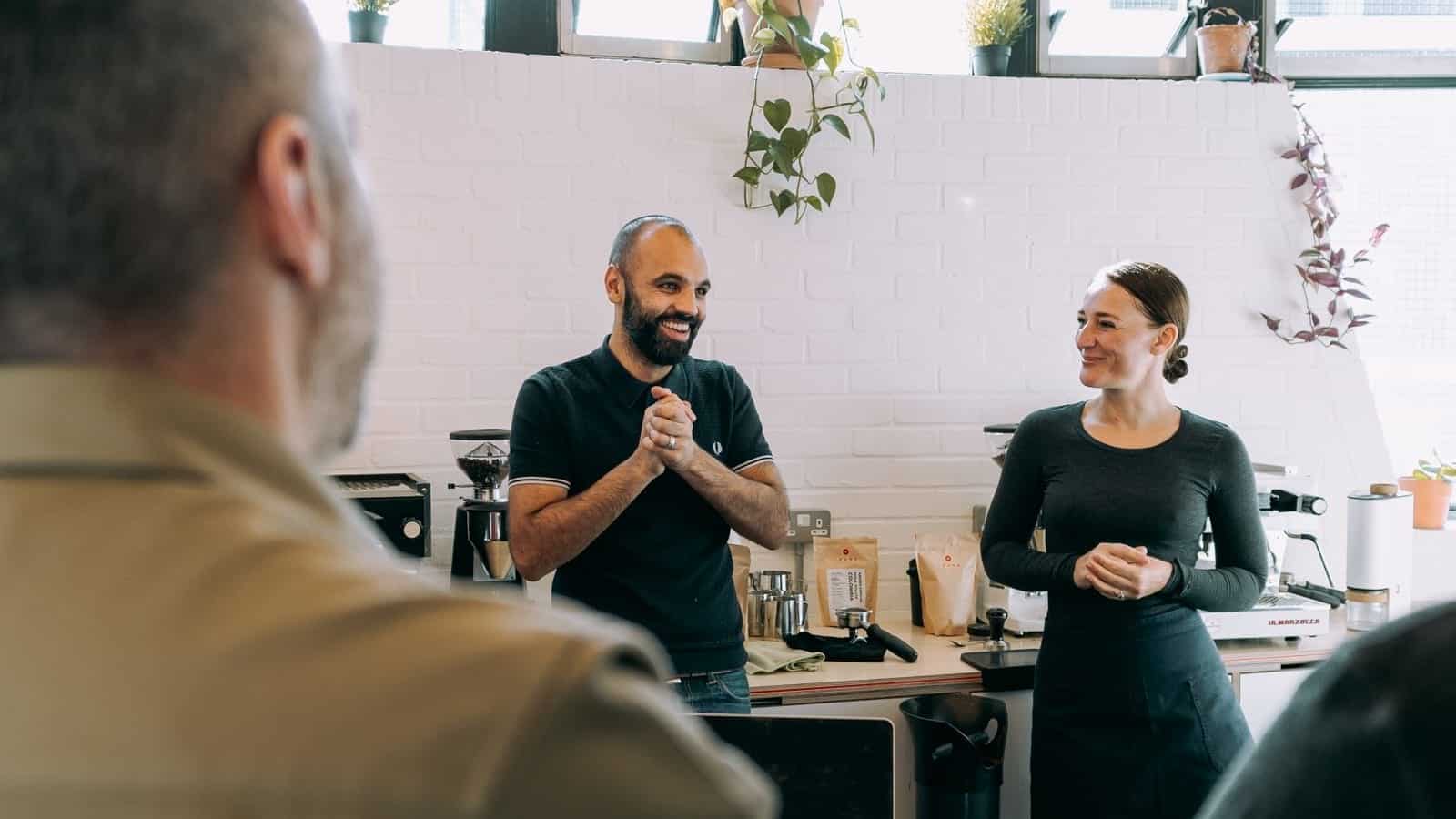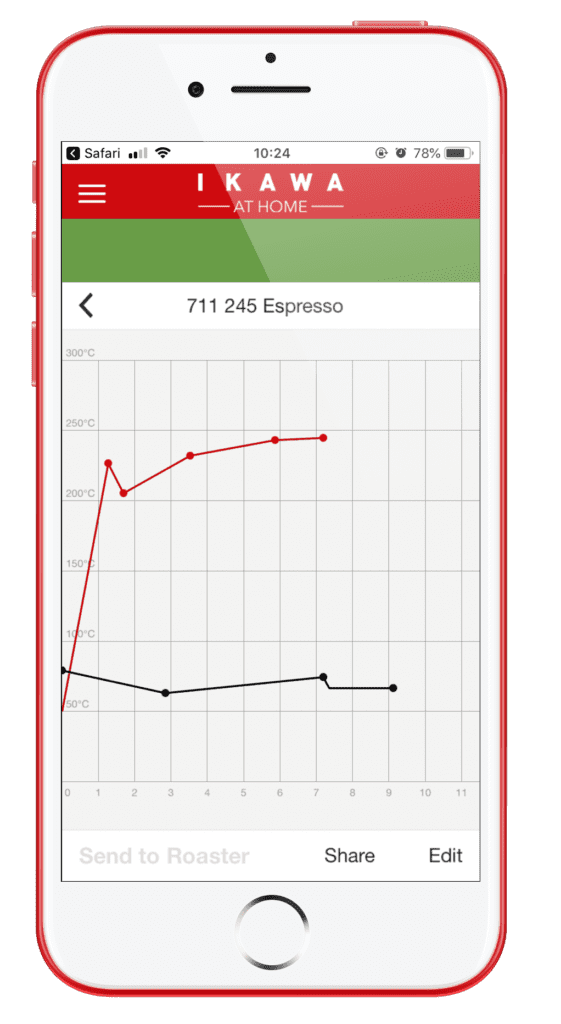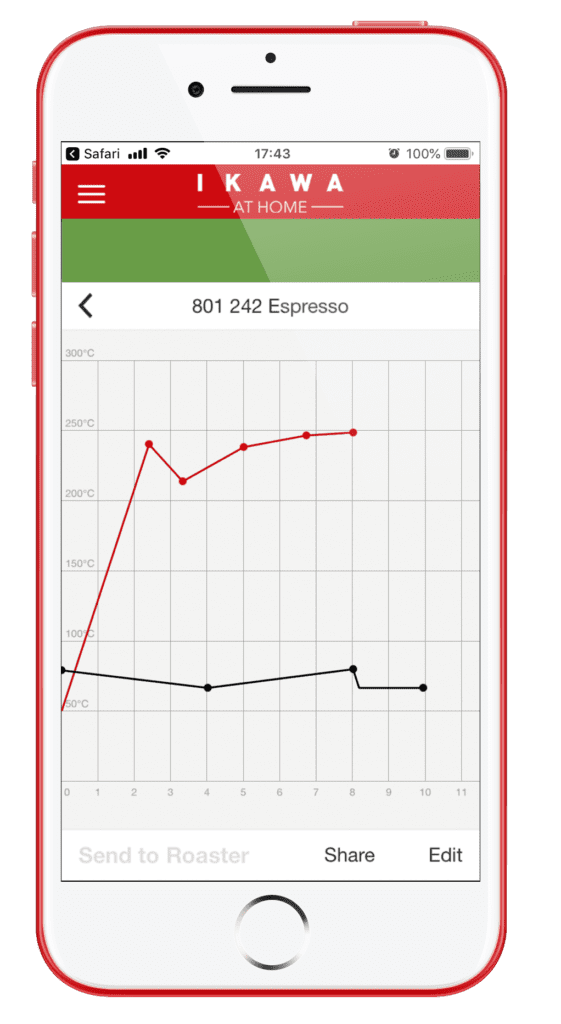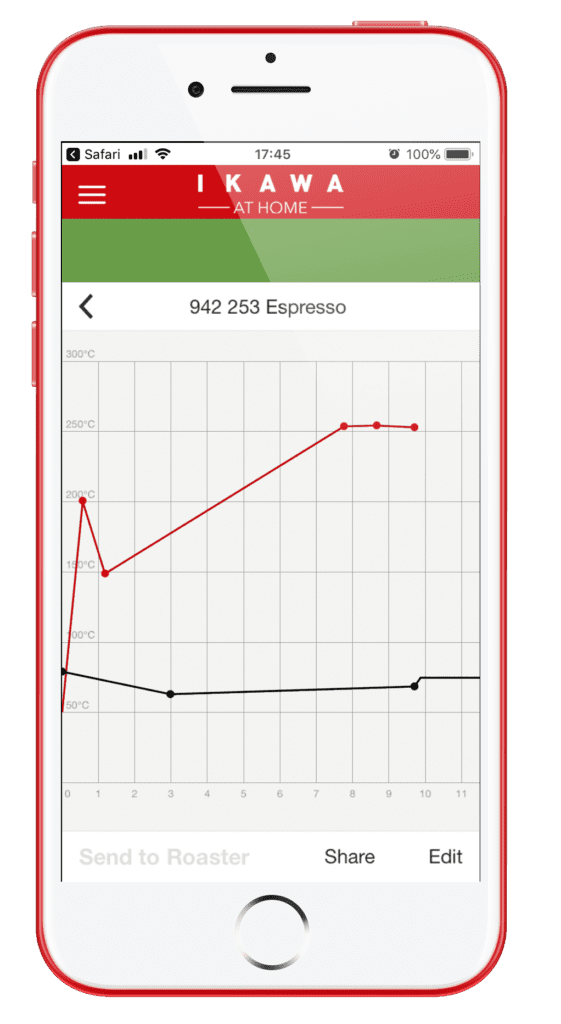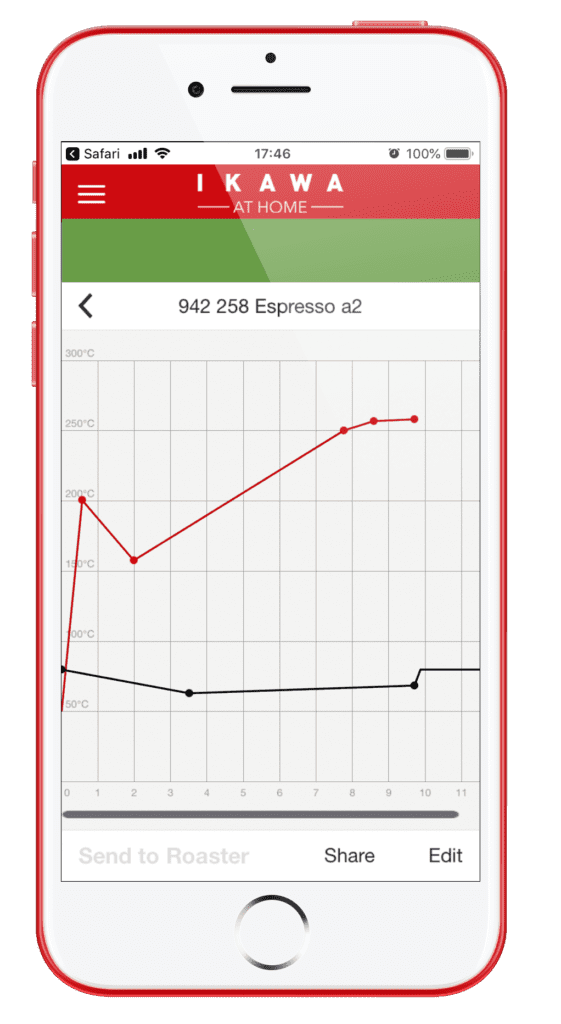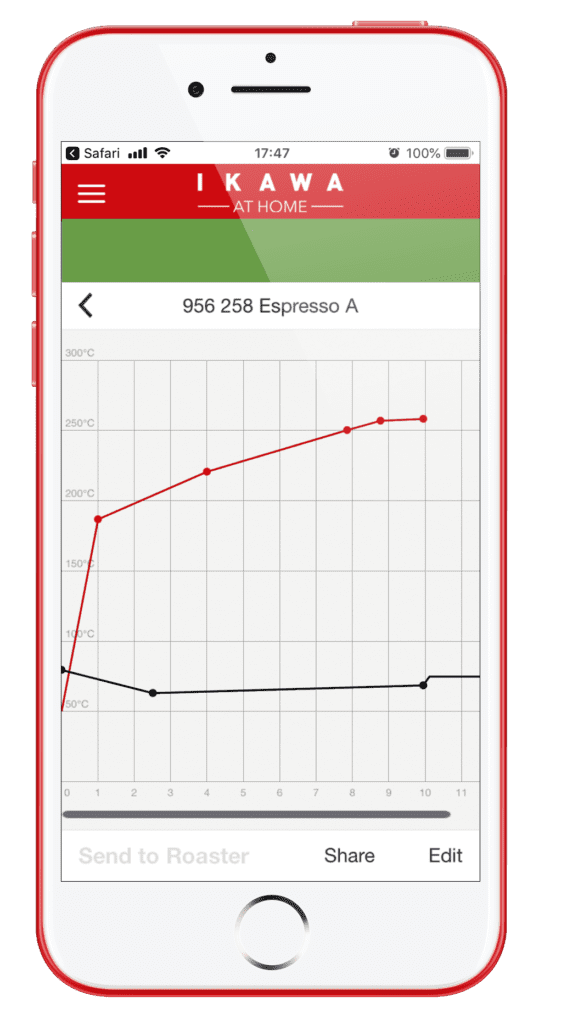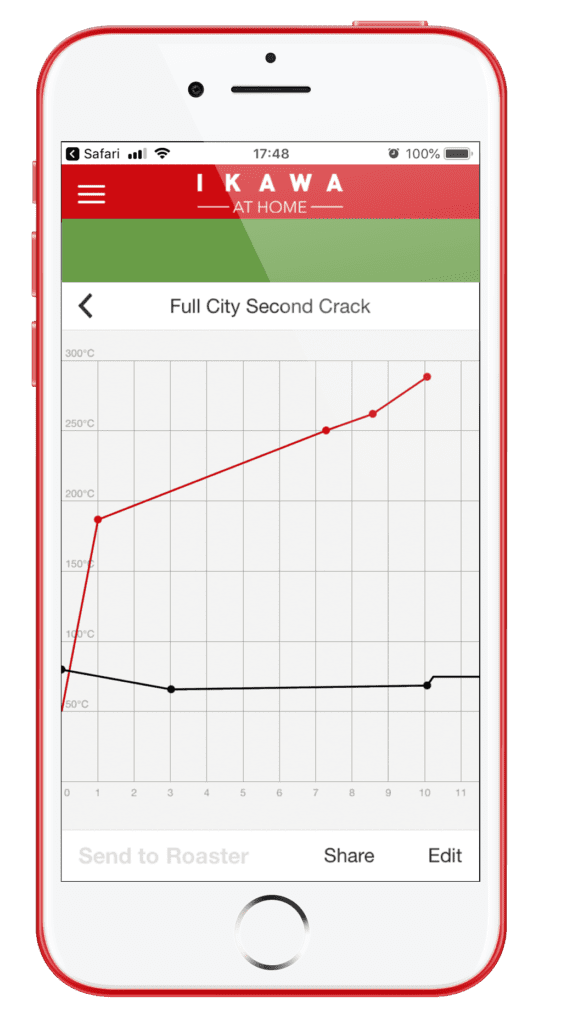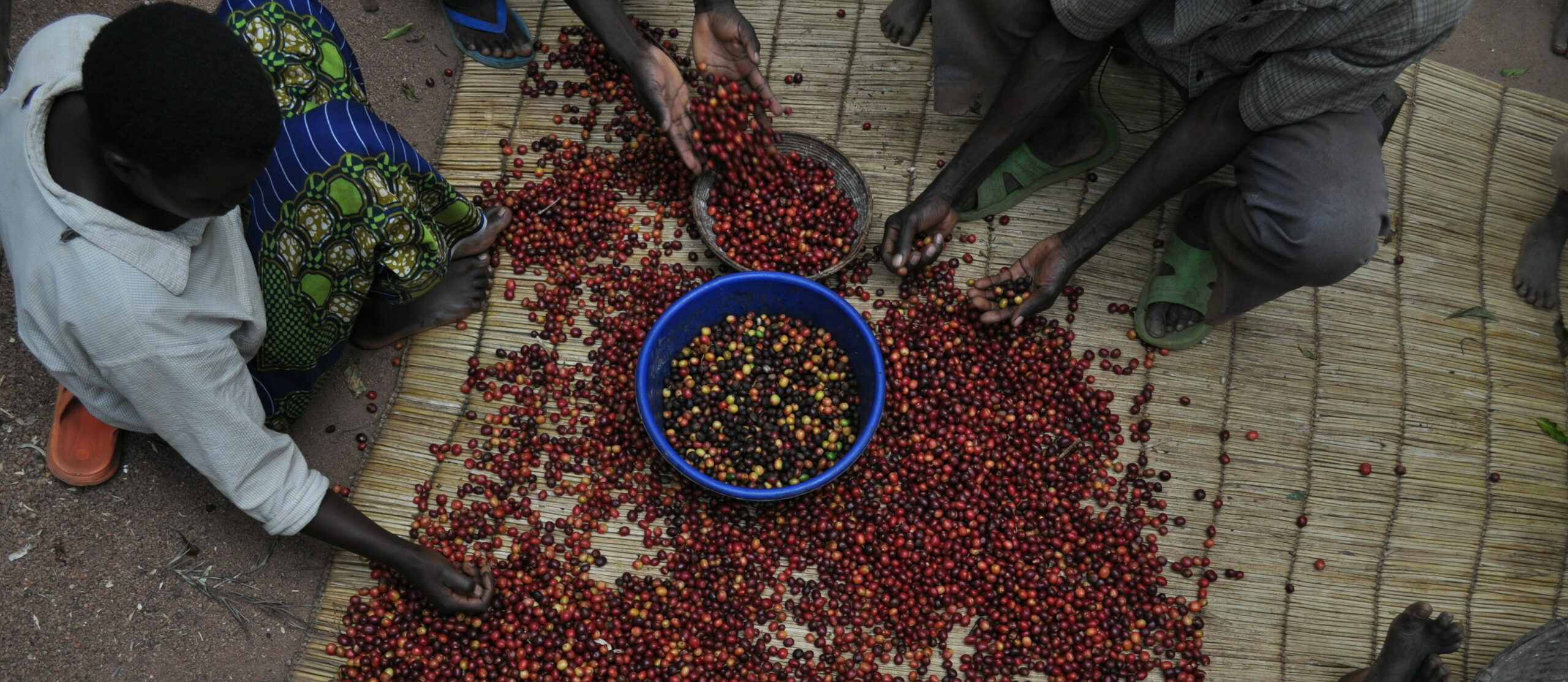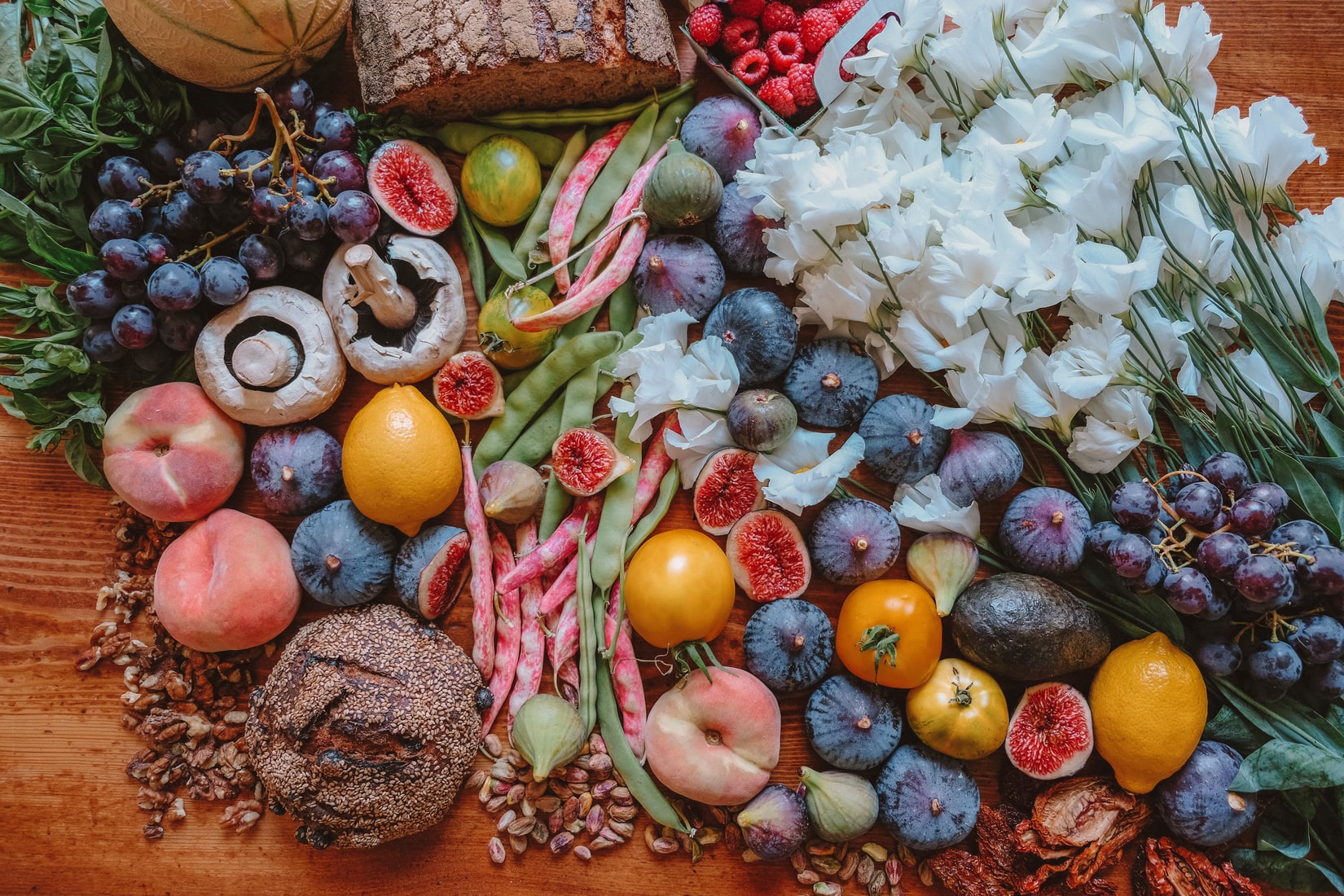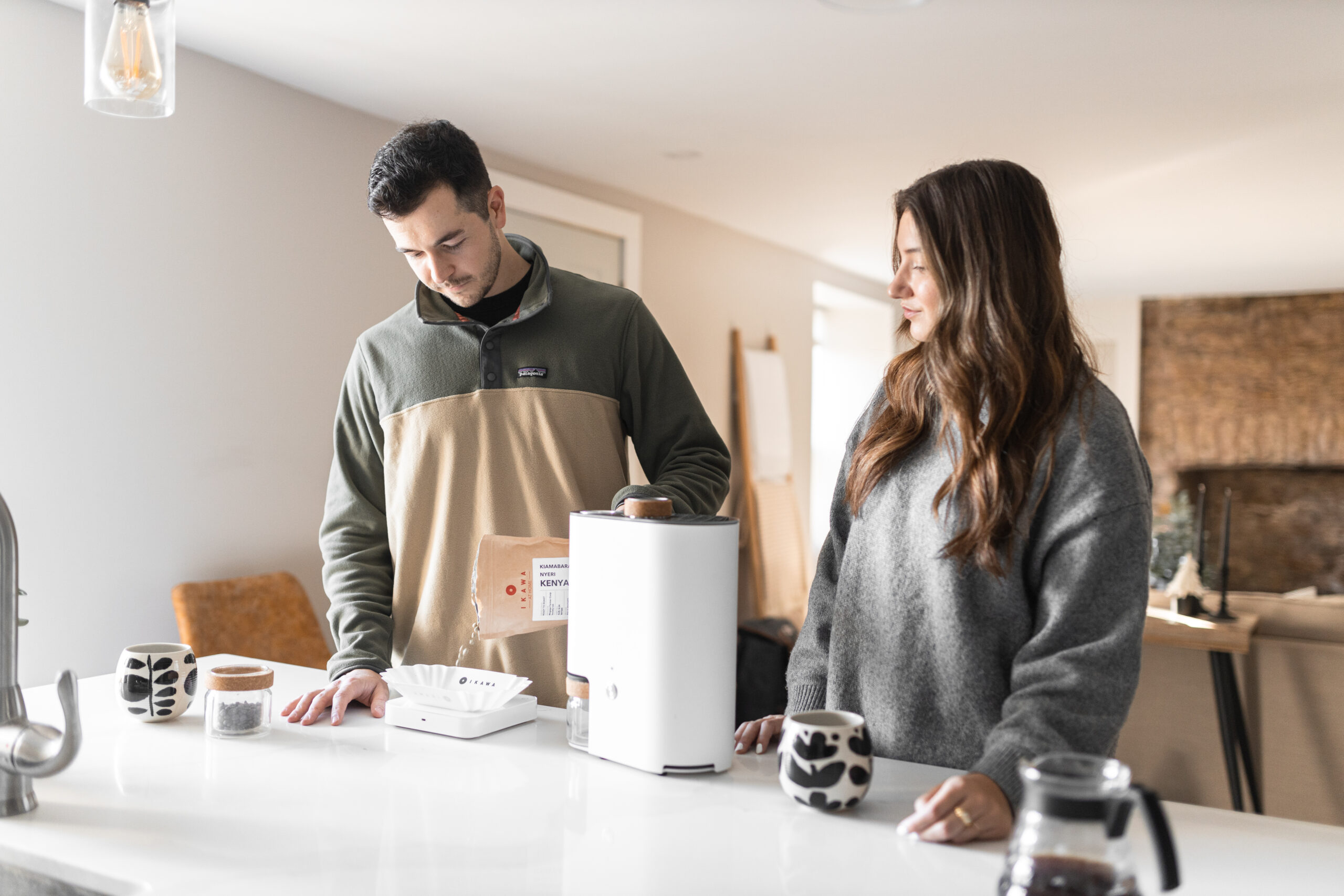Espresso and IKAWA At Home
We know that loads of our At Home customers love espresso. In fact many of our Professional customers love using IKAWA to roast their espresso coffee – we were super proud that finalists in the World Barista Championships used IKAWA not only to select their Championship Coffees, but also to roast it using their Pro Sample Roasters.
We’ve written before about roasting for espresso and Geoff made this video about it too.
Last month we teamed up with La Marzocco to run a small session in our London workshop all about espresso. We focused on the roasting side, and the guys from La Marzocco set up a few Linea Minis and ran a masterclass on espresso – covering solubility, grind, dose, ratios, milk and ‘the pour’ which went down a storm.
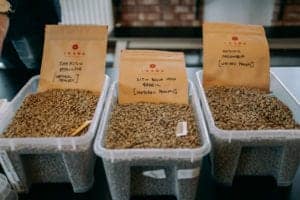


In this post we wanted to extend the event to those who couldn’t make it; including roast profiles, and ideas to help you create roasts (and espresso) you will love.
New Espresso Roast Profiles
If you’re new to IKAWA At Home and curious about what a roast profile actually is, have a read of this summary.
The profiles work well with a range of origins, particularly our washed Guatemala and Colombia, honey processed Honduras, and pulped natural Brazil – but have a play with other coffees too – or you can blend them if you’d rather. These espresso profiles achieve a range of roast degrees. We’ve written this post about roast degrees which explains a lot of the nuance.
First up, these profiles below create a relatively ‘third wave’ espresso, and suit the natural Brazilian coffee especially.

